by Editor | Dec 7, 2009 | Luxury Travel
By Elena del Valle and photos by Amparo Cadavid
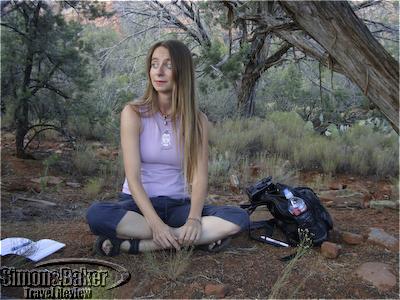
Patricia Fonseca, our dosha instructor
We met Patricia Fonseca, a dosha instructor with a bright smile and a friendly demeanor, at the lobby of our hotel late one afternoon during a visit to the town of Sedona, Arizona for a late afternoon Dosha Tour (it proved to be more of an exploration). We were intrigued by the general idea of doshas although we knew little about the details. Since the town is well known for its vortexes (energy centers) and appeal to adepts of the spiritual arts discovering our dosha type seemed appropriate. Doshas are Ayurveda mind and personality profiles; Ayurveda is the Indian concept of living in harmony with nature.
From our hotel in downtown Sedona we drove to the Buddhist Stupa, a place for meditation and contemplation, a few minutes south on Arizona State Route 89A. Once there, we each circled the statue of Buddha thrice in a clockwise direction before settling in Patricia’s “secret place,” a quite corner in the nearby brush. We began by completing a short dosha written questionnaire which addressed our physical characteristics, behavior, and eating habits among other things.

The Sedona Buddhist Stupa
Patricia, who is also a yoga instructor and attorney, discussed the results with us and explained the characteristics of each of the three doshas: Vata (air and ether), Pitta (fire with water) and Kapha (water and earth). She shared daily lifestyle and dosha specific recommendations for meditation, exercise, eating and bathing such as sleeping well enough to wake up on your own (rather than to the sounds of an alarm clock), brushing your teeth and using sesame, coconut or mustard oil in your bathing ritual depending on your mood. We concluded our private two-hour session with a few minutes of Circle Breath of Life meditation in the half light of the early evening. Discovering our dosha profile was fun and expanded our self awareness.


Patricia, who has been teaching Ayurvedic Yoga and offering dosha consultations for eight years, studied with an Ayurvedic teacher for five years and upgrades her knowledge through self study. While we were with Patricia we noticed a pretty stone and Swarovski crystal necklace she was wearing and complimented her on it. The Sedona resident explained it is part of Dosha Designs, a line of jewelry she created to match the color and mood preferences of each the three doshas.
She matches earth and forest tones (amethyst and opals) for Vata, ocean colors (tourmaline and fluorite) for Pitta and vibrant colors such as purple and pastel tones (garnet and citrine) for Kapha types. The earrings, bracelets and necklaces were sold at Sedona Rouge, a local hotel. She hopes to offer a selection online in the coming months.
The Dosha Tour, available for the past three years, was booked through Sedona Red Rock Tours (P.O. Box 4074 Sedona, Arizona 86340, 928-282-0993 and 928-274-1323, www.sedonaredrocktours.com, and sedonaredrocktours@gmail.com).
by Editor | Nov 23, 2009 | Luxury Travel
Article by Andrea de Gosztonyi and Douglas McRae and photos by Andrea de Gosztonyi
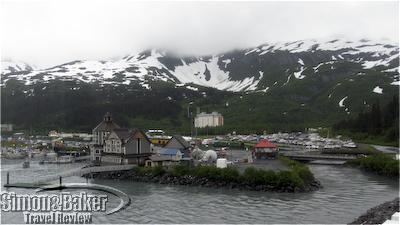
A stop during our Alaska cruise
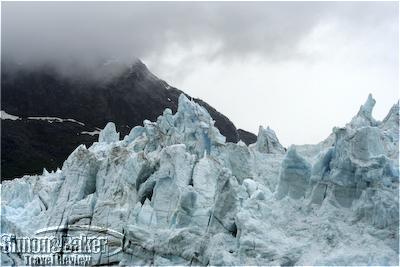
Ice in Alaska
Summer is the best time for an Alaska Cruise. My husband needed to be in Anchorage Alaska for the middle of July and so we chose to travel on the Island Princess, which is part of the fleet of Princess Cruise Lines. We chose an eight day, seven-night north bound cruise to Whittier Alaska, United States. We sailed the inside passage, viewed massive glaciers and stopped at several ports on the way. We embarked in Vancouver British Columbia Canada and sailed past Stanley Park, the Lions Gate Bridge and through the offshore islands. From the deck, we saw the majestic snow capped Rocky Mountains.
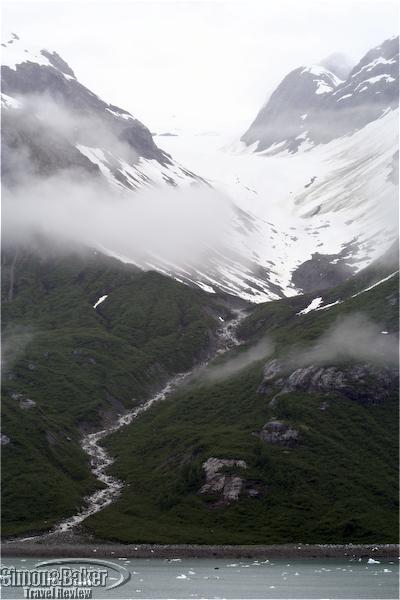
Alaska during our cruise
We also were on the lookout for dolphins, whales, porpoises and sea otters. We enjoyed our first port call in Ketchikan, the ancestral home of the Haida, Tlingit and Timshian Native Tribes. We docked in Juneau, the capital of the State of Alaska and spent the day exploring its many sights. Skagway, gateway of the Klondike Gold Rush was our next stop. We also saw calving glaciers in Glacier Bay and College Fjord and we cruised the Prince William Sound which is at the top of the Gulf of Alaska. We disembarked in the town of Whittier, located 60 miles south of Anchorage.
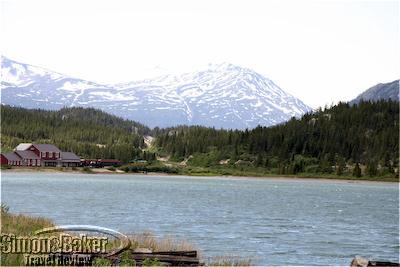
A view during our Alaska cruise
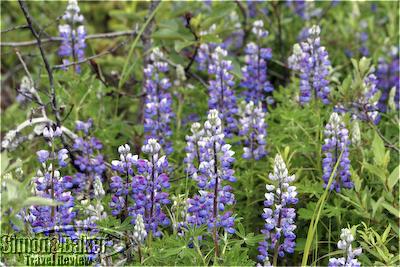
Alaska flowers
It was our first time on a cruise and we were not sure that we would enjoy travelling in such a confined space. We were wrong! The Island Princess was spacious and luxurious, the rooms were cozy and comfortable, the attention we received from the staff was exceptional and attentive and the food was fabulous!. Cruising at night and visiting interesting ports of call is a winning formula and we were completely won over. Click here for details about our Island Princess Vancouver to Whittier cruise.
by Editor | Nov 16, 2009 | Luxury Travel, Products
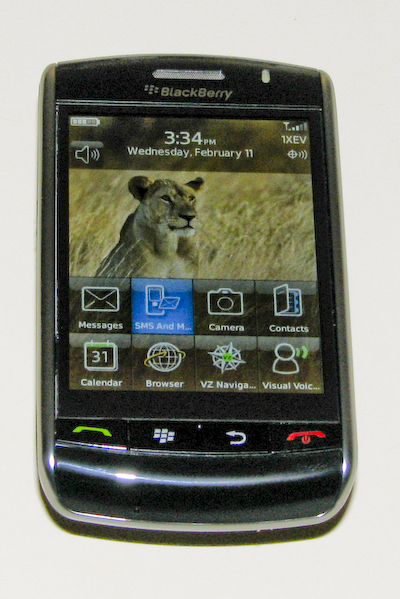
Verizon Blackberry Storm
In today’s rapidly evolving marketplace of smart phones, the Blackberry Storm from Verizon raises the bar with several unique features. Its compact form fits comfortably in the hand or pocket with minimal external controls to mar its sleek solid feel and sleek design. With the screen lock enabled, the phone fit comfortably into a pocket with the need for a protective case.
The unit we tried had an 8GB mini-SD installed and came with an international plug package that was useful in Europe; no additional adapter was required to charge the phone in Germany. We tested the phone for several weeks in Colombia, South Africa, Botswana, the U.S. and in Europe (Germany and France). It worked perfectly as a cell phone and Internet access functioned everywhere we tried it. It seemed that the high speed 3G network was available most of the time.
From the first touch, it is clear that this is not an ordinary phone. The bright screen is eye catching with a solid glass surface that actually clicks when pressed. Combined with onscreen displays it creates a totally unique feedback system for the user. The tactile response allows much faster use of the touch screen because the fingers know how many times a particular item was pressed. With many other touch screens, the visual queues take a second to be processed.
Another great feature is the rotation of the display as the phone turns, which is enabled in every application. Some competing systems provide a similar response when the phone is turned, but most do not have it as deeply ingrained into every application as the Storm. For those users with large fingers, the sideways full screen keyboard was a real blessing.
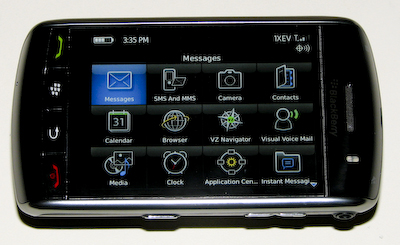
Verizon Blackberry Storm Horizontal
Web access was smooth and natural with excellent reproduction of most web pages on the tiny screen. A few quick finger motions allow for rapid navigation and scaling in an intuitive manner, and made browsing practical in spite of the lack of a keyboard. It was great having a fully functional browser always along to quickly look up an address or phone number.
Email setup was made easier by predefined wizards for common mail services, but even regular POP configuration was quickly accomplished. The built-in camera allowed us to send instant postcards to friends and family using email attachments. With a 3.2 Megapixel photo size, a built in image stabilizer and video capability, the Storm offers multiple options to capture the moment.
The application suite that came with the phone allowed download of movies and audio files for playback on the Storm. The video format produced a nice picture quality with practical volume on the speakers, although the application took quite a bit of time to convert to the format used on the phone. The software was Windows based and the install was straightforward.
Once installed and connected to the phone, audio, video and images could be loaded into the chip memory installed in the phone or extracted to backup the smartphone to the computer. We like the idea that the micro-SD memory capacity can grow with technology, a serious advantage over competitors with hard wired RAM for storage.
A favorite feature was the data modem which allowed the laptop to access the Internet through the smartphone high speed network access. Fair use rules apply and allow a liberal amount of network access when traveling. We had less success in Europe, it was trying to connect to the German parent company for Verizon, but just never quite got it working.
In summary, the Verizon Storm has a number of features that make it a serious contender for the Apple iPhone. With swappable memory cards and batteries, smaller size, improved photo and video capability, tactile feedback and fully integrated display rotation, the Blackberry Storm sets the bar higher and will attract business users interested in a highly functional international phone.
by Editor | Nov 2, 2009 | Luxury Travel
Article and photos by Josette King
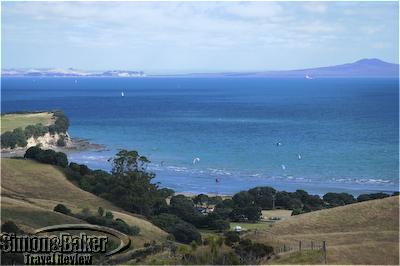
A sea view in Auckland
After the seemingly endless night flight from the United States, watching Auckland, New Zealand, sparkle beneath the plane in the early morning sunshine felt like an especially crisp breath of fresh air. The City of Sails, as Auckland is called, immediately delivered on its nickname. Built on a narrow stretch of verdant hills between the South Pacific Ocean and the Tasman Sea, the city welcomed me with a gentle sea breeze and a translucent morning sky that was an invitation to a walk.
Although its 1.3 million residents (roughly one-third of the country’s population) make Auckland the largest and most densely populated urban center in New Zealand, the city center was remarkably uncrowded. Its lush parks and laid-back atmosphere evoked a college town, rather than the main commercial and industrial hub of New Zealand.
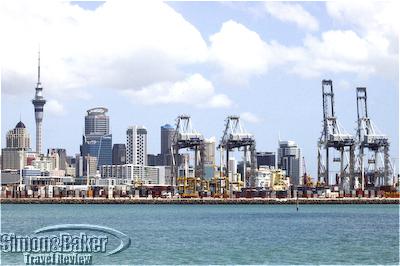
Auckland, a city skyline
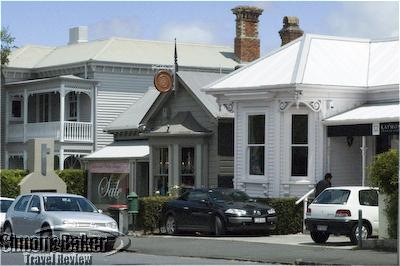
A street in Auckland
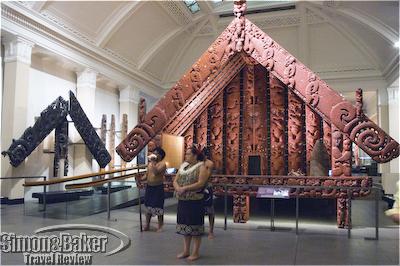
Inside the Auckland Museum
In Auckland, all roads slope toward the sea. I soon found myself boarding one of the many tour boats for an exhilarating cruise of the harbor and the stunning seascapes beyond. The pristine, shimmering sea was filled with sailboats of all sizes, its coastline festooned with coves bristling with marinas. The horizon was dotted with the soft outline of ancient volcanoes.
In the bracing sea air, I could feel the woolly feeling of jetlag literally wash away from me. After resetting my internal clock with a satisfying night’s sleep, I spent the next day enjoying the historic Parnell neighborhood and the Auckland Museum, which houses one of the most extensive and significant collections of Maori and Pacific Islands artifacts in the world.
One last day to explore the spectacular black sand beaches of the Tasman Sea just north of Auckland and I felt fully adjusted to South Pacific time and atmosphere. I was ready for the four-hour flight to Sydney, my final destination, and my full schedule ahead. Click here for more on my extended stop-over visit to Auckland, New Zealand
by Editor | Oct 19, 2009 | Luxury Travel
By Andrea de Gosztonyi-McRae and Doug McRae and photos by Andrea de Gosztonyi-McRae
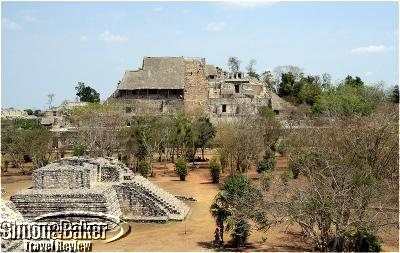
Ek Balam pyramid
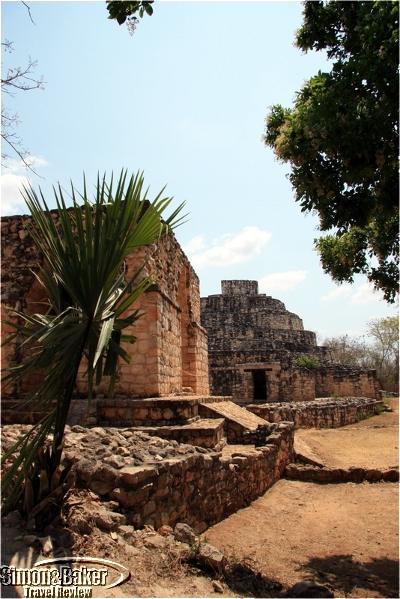
Ek Balam
Tucked away in the jungles of the Mayan Riviera in Mexico, Coba and Ek Balam are ancient Mayan ruins that are only just being discovered. As majestic as Chichen Itza, these two archaeological sites are only just coming into their own.
Ek Balam is Mayan for black jaguar and was built between 600 and 900 A.D. Excavation of this site was started only eight years ago and it is very much a work in progress. At 480 feet long, 180 feet wide and 96 feet tall, the pyramid is the grandest of the restored buildings. It is believed to have once served as a palace for court officials, on their long trek from Tulum to Chichen Itza. We found the strenuous climb to the top, over uneven steps and in the hot sun, was well worth the effort. A stunning view of the region lay at our feet.
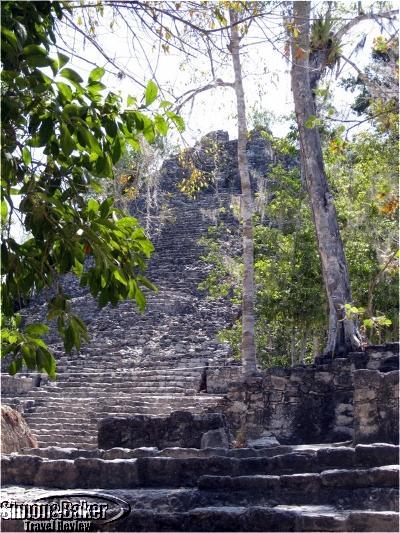
Coba pyramid
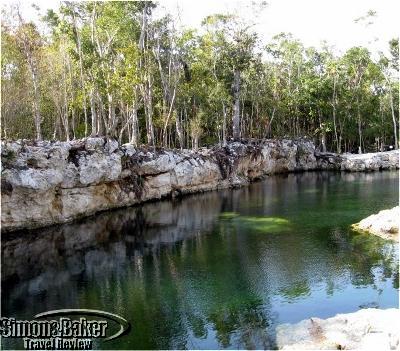
A cenote
Coba is Mayan for ruffled waters and lies deep in the jungle. A mile long walk through a luxurious shaded path took us to a clearing where the largest pyramid in the Yucatan Peninsula is located. Bicycles or rickshaws were also available at the entrance. At 136 feet high, Nohoch Mul, big hill’in Mayan, is spectacular. We found the strenuous climb up to the top amazing but the climb down was more difficult as we had to step sideways over the uneven rocks. One of the most interesting aspects of Coba is the fragments of colourfully painted murals that can still be seen there. Click here for more about our visit to Coba and Ek Balam.
by Editor | Sep 21, 2009 | Luxury Travel

A table setting at Restaurant Alain Ducasse au Plaza Athenee
When it comes to over the top, superlative dining experiences Alain Ducasse and his team delivered at the eponymous restaurant at the Plaza Athenee Hotel in Paris, France. There our team rediscovered the allure of this well known restaurant.
While noteworthy meals are one of the attractions of Europe’s favorite tourist city, it was the combination of exquisite dishes served with care by attentive and friendly staff in an attractive dining room in one of the city’s better hotels that once again made the Alain Ducasse restaurant a favorite. Click here for more about what Elena and Gary liked about Restaurant Alain Ducasse au Plaza Athenee



























